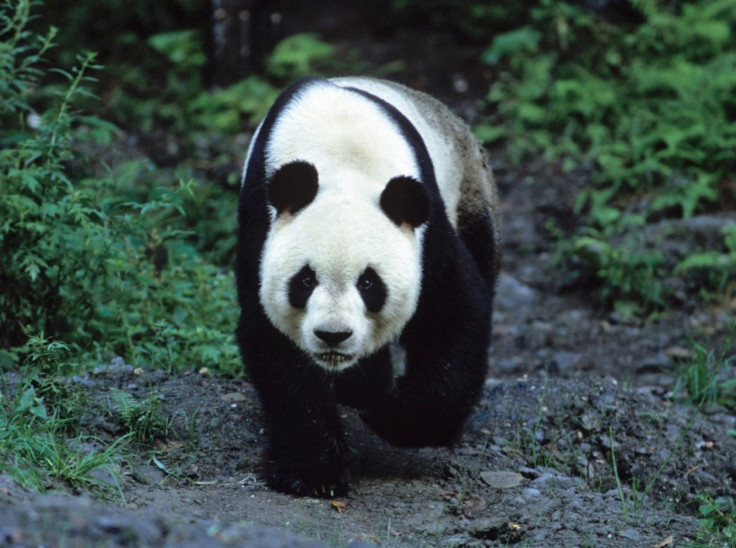Global Warming May Wipe Out China's Iconic Giant Pandas

Rising global temperatures threaten to destroy the last remaining bamboo habitats of the giant panda, meaning China's iconic symbol may be headed for extinction in the wild by the end of the century.
According to a study published in the journal Nature Climate Change, the expansion of human settlements further exacerbates the danger by blocking pandas' access to bamboo in areas less impacted by climate change.
The research discussed the Qinling Mountains in Shaanxi Province, where about 275 wild pandas remain, accounting for roughly 17 percent of the total wild giant panda population.
Discovery News reported that no more than 1,600 wild giant pandas exist, making them one of the world's most endangered species.
Pandas in Qinling are largely isolated, surrounding by human population outside the mountain range. A loss of bamboo, the pandas' principal food source, places the bears in grave jeopardy.
“Ninety-nine percent of food that pandas eat in the wild is bamboo,” said Jack Liu, an ecologist at Michigan State University in East Lansing, according to Discovery News.
“If there’s no bamboo, then pandas can’t survive. I think probably there is hope, but only if we take active measures at once. If we don’t, then probably not. It really depends on what we will do.”
Bamboo, the study cited, is unlikely to adapt to shifts in climate, due to its unique reproductive cycles.
"We will need pro-active actions to protect the current giant panda habitats," said lead researcher Dr Mao-Ning Tuanmu, from Yale University, according to the Daily Telegraph newspaper.
"We need time to look at areas that might become panda habitat in the future, and to think now about maintaining connectivity of areas of good panda habitat and habitat for other species."
The researchers beseeched the Chinese government to implement strict conservation efforts to protect the bamboo, and the giant pandas.
Dr Jianguo Liu, from Michigan State University, a co-author of the study, said: "Understanding impacts of climate change is an important way for science to assist in making good decisions. Looking at the climate impact on the bamboo can help us prepare for the challenges that the panda.”
Stanford University ecologist Terry Root puts the problem in stark terms.
“Most biologists think we’re standing on the edge of a mass extinction event,” she told Discovery News.
"It's going on all over the place, we just haven’t noticed it. Actually noticing it in an iconic species like the panda is super unfortunate, but maybe it will get people to understand what’s going on. It's a wake-up call."
But not everyone is convinced about these dire predictions regarding global warming.
A Daily Telegraph reader commented: “I had some bamboo in my garden. It grew like a weed rain or shine and it was impossible to completely get rid of it. I think the problem lies with habitat destruction by man but then they wouldn't get their funds if they didn't call it 'climate change'”
© Copyright IBTimes 2025. All rights reserved.





















